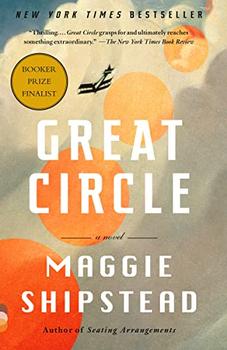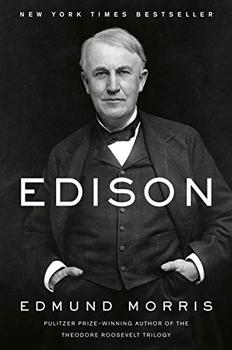Summary | Excerpt | Reviews | Beyond the book | Read-Alikes | Genres & Themes | Author Bio

The Wright Brothers, Glenn Curtiss, and the Battle to Control the Skies
by Lawrence GoldstoneA thrilling narrative of courage, determination, and competition: the story of the intense rivalry that fueled the rise of American aviation.
The feud between this nation's great air pioneers, the Wright brothers and Glenn Curtiss, was a collision of unyielding and profoundly American personalities. On one side, a pair of tenacious siblings who together had solved the centuries-old riddle of powered, heavier-than-air flight. On the other, an audacious motorcycle racer whose innovative aircraft became synonymous in the public mind with death-defying stunts. For more than a decade, they battled each other in court, at air shows, and in the newspapers. The outcome of this contest of wills would shape the course of aviation history - and take a fearsome toll on the men involved.
Birdmen sets the engrossing story of the Wrights' war with Curtiss against the thrilling backdrop of the early years of manned flight, and is rich with period detail and larger-than-life personalities: Thomas Scott Baldwin, or "Cap't Tom" as he styled himself, who invented the parachute and almost convinced the world that balloons were the future of aviation; John Moisant, the dapper daredevil who took to the skies after three failed attempts to overthrow the government of El Salvador, then quickly emerged as a celebrity flyer; and Harriet Quimby, the statuesque silent-film beauty who became the first woman to fly across the English Channel. And then there is Lincoln Beachey, perhaps the greatest aviator who ever lived, who dazzled crowds with an array of trademark twists and dives—and best embodied the romance with death that fueled so many of aviation's earliest heroes.
A dramatic story of unimaginable bravery in the air and brutal competition on the ground, Birdmen is at once a thrill ride through flight's wild early years and a surprising look at the personal clash that fueled America's race to the skies.
Goldstone outlines practically every nuance about the patent fight and this makes for slow reading, especially since the field of view is restricted mostly to the players’ lives on the airfield. While we do learn of the Wright brothers’ strict religious views (their father was a pastor in Ohio), very little else comes through clearly about their personal lives. Despite these drawbacks, Birdmen soars in having us weigh the costs of shared knowledge on the one hand and just rewards on the other...continued
Full Review
(987 words)
This review is available to non-members for a limited time. For full access,
become a member today.
(Reviewed by Poornima Apte).
 In Birdmen, Lawrence Goldstone describes how Glenn Curtiss diversified operations and courted a variety of vendors to deliver specialized engines and airplanes. Most notable amongst these were the JN series of airplanes built to fulfill an army request that both the engine and the propeller be at the front of the plane. Up until then crashes dislocated a rear-placed engine that would then roll forward and crush the pilot. The JN series, popularly known as the Jenny, went through a series of iterations with engine and other structural changes but the JN-4, with a Curtiss engine, was by far the most popular. World War I put production into overdrive with the Army, Navy and the Canadian armed forces all signing contracts for the plane.
In Birdmen, Lawrence Goldstone describes how Glenn Curtiss diversified operations and courted a variety of vendors to deliver specialized engines and airplanes. Most notable amongst these were the JN series of airplanes built to fulfill an army request that both the engine and the propeller be at the front of the plane. Up until then crashes dislocated a rear-placed engine that would then roll forward and crush the pilot. The JN series, popularly known as the Jenny, went through a series of iterations with engine and other structural changes but the JN-4, with a Curtiss engine, was by far the most popular. World War I put production into overdrive with the Army, Navy and the Canadian armed forces all signing contracts for the plane.
...
This "beyond the book" feature is available to non-members for a limited time. Join today for full access.

If you liked Birdmen, try these:

by Maggie Shipstead
Published 2022
An unforgettable story of a daredevil female aviator determined to chart her own course in life, at any cost - Great Circle spans Prohibition-era Montana, the Pacific Northwest, Alaska, New Zealand, wartime London, and modern-day Los Angeles.

by Edmund Morris
Published 2020
From Pulitzer Prize-winning author Edmund Morris comes a revelatory new biography of Thomas Alva Edison, the most prolific genius in American history.
The third-rate mind is only happy when it is thinking with the majority. The second-rate mind is only happy when it...
Click Here to find out who said this, as well as discovering other famous literary quotes!